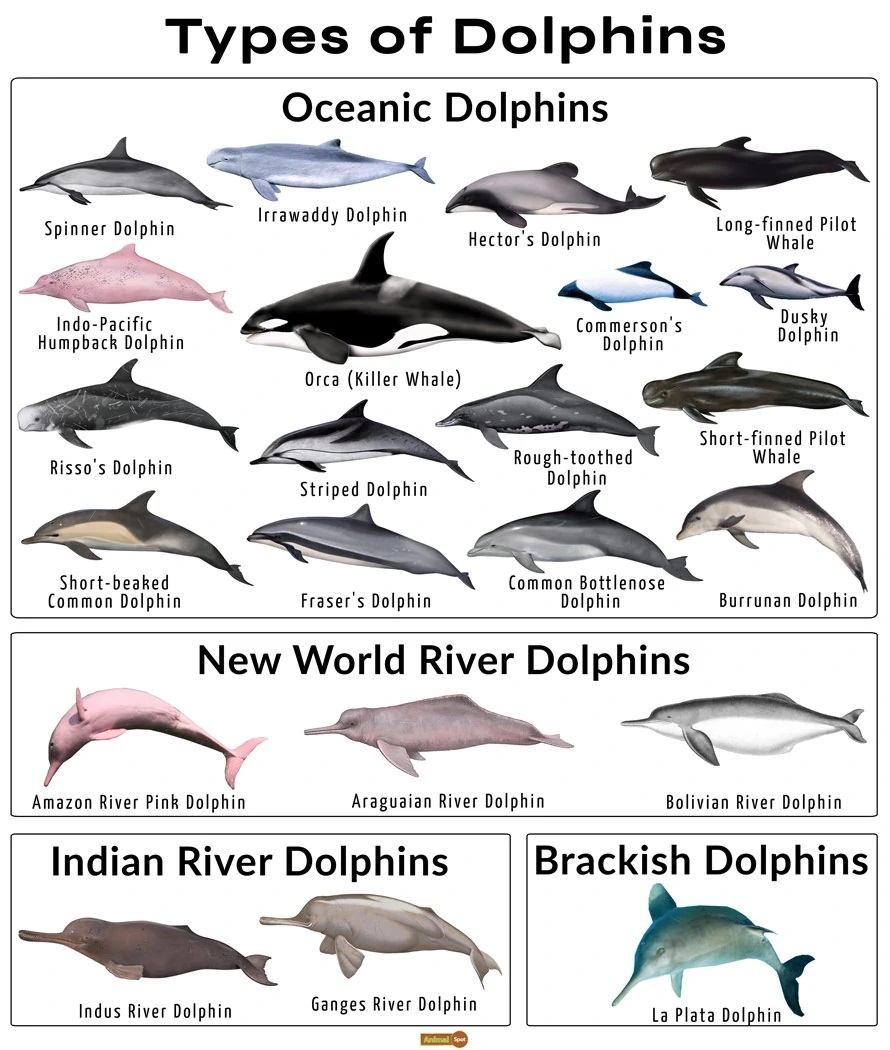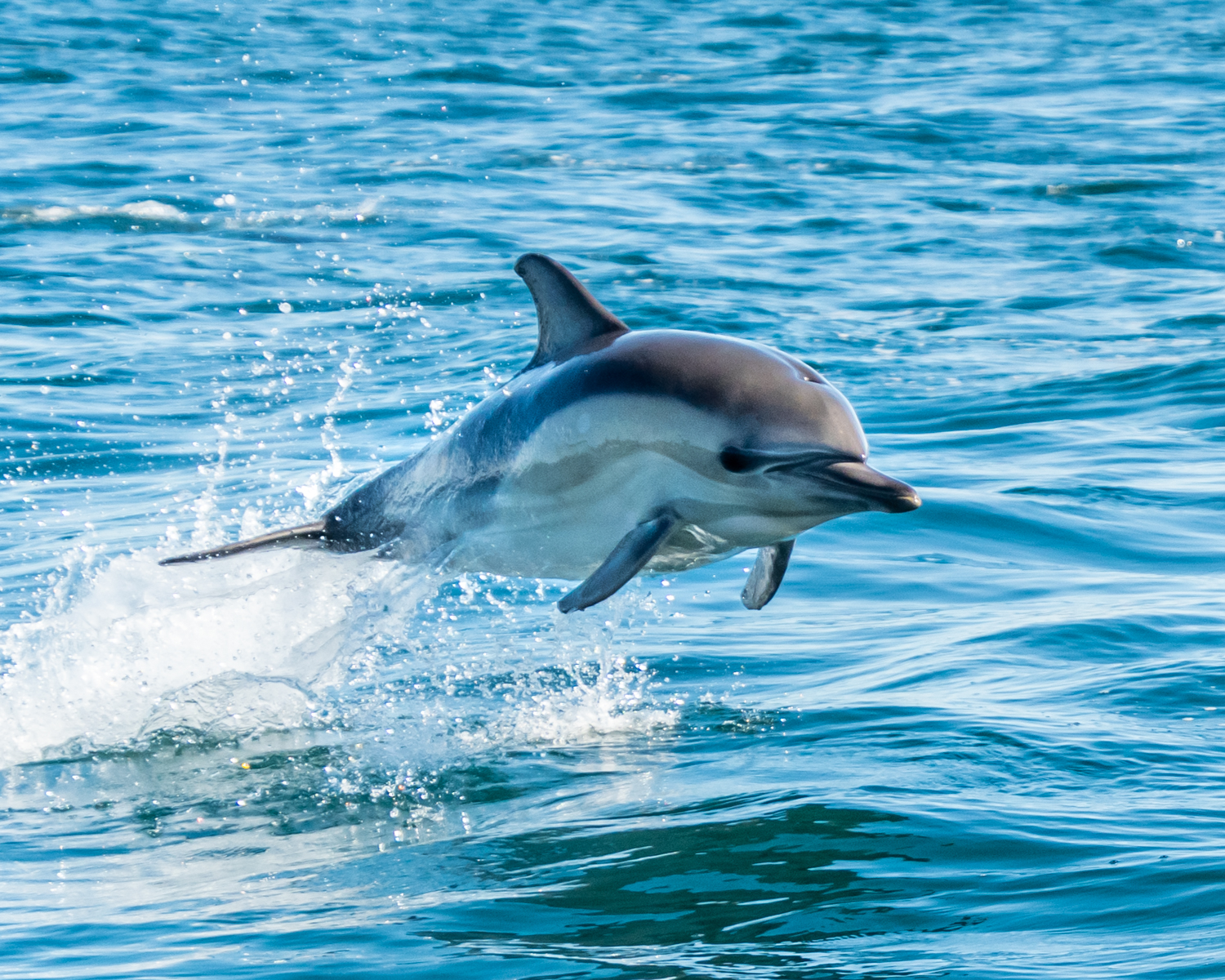Reveal Surprising Dolphin Facts That Highlight Their Playful Nature
Wiki Article
Dive Into the Sea: Exciting Dolphin Truths for Sea Lovers
The globe of dolphins offers a remarkable intersection of intelligence, social actions, and environmental relevance. With roughly 37 species, these aquatic creatures display a range of remarkable features that not just captivate sea lovers however also highlight their important role in aquatic ecological communities. From their intricate interaction techniques to their outstanding analytic abilities, dolphins challenge our understanding of pet intelligence. However, the pushing demand for conservation initiatives to protect these animals and their habitats raises essential concerns about our duty towards the ocean's citizens. What implications do these factors hold for our communications with these impressive beings?Dolphin Variety Diversity
Variety is a hallmark of the dolphin family members, encompassing a vast array of species that display distinct physical qualities, habits, and environments. The family Delphinidae, typically called nautical dolphins, comprises roughly 37 types, each adapted to certain eco-friendly specific niches. As an example, the bottlenose dolphin (Tursiops truncatus) is renowned for its knowledge and convenience, thriving in both open and coastal ocean atmospheres.On the other hand, the orca (Orcinus whale), frequently referred to as the awesome whale, is the biggest participant of the dolphin family members and is identified by its striking black-and-white pigmentation. Orcas show complex social frameworks and searching techniques, showcasing the behavioral variety within the family members. Various other varieties, such as the rewriter dolphin (Stenella longirostris), are kept in mind for their acrobatic displays and choice for warmer waters, highlighting the flexibility of dolphins to numerous aquatic ecosystems.
Additionally, river dolphins, consisting of the pink river dolphin (Inia geoffrensis), live in freshwater settings, better highlighting the wide-ranging habitats that dolphins occupy. Dolphin Facts. This amazing diversity not only enriches marine communities however likewise stresses the relevance of preservation initiatives to safeguard these remarkable animals and their atmospheres
Social Habits and Communication
The elaborate social behavior and interaction techniques of dolphins are important components of their presence, assisting in group cohesion and boosting survival. These very intelligent marine mammals show complicated social structures, often creating sheaths that can range from a couple of individuals to over a hundred. Within these teams, dolphins involve in behaviors such as participating searching, social play, and common protection, which cultivate strong bonds amongst participants.Dolphins use a sophisticated selection of vocalizations, consisting of clicks, whistles, and body language, to communicate details and express emotions. Their signature whistles act as unique identifiers, comparable to names, enabling individuals to call out to each other. This vocal interaction is matched by non-verbal signals, such as jumping, slapping the water, and synchronized swimming, which better boosts their interactions.

Unique Feeding Behaviors
One-of-a-kind feeding routines define dolphins, showcasing their adaptability and knowledge in different marine settings. These aquatic animals are known for their varied diet plans, which primarily include fish, squid, and shellfishes. Their hunting techniques can differ substantially, frequently customized to the certain prey and ecological conditions.One notable approach is cooperative searching, where dolphins work in teams to herd institutions of fish into limited formations, making it much easier for individuals to capture their meal. This social actions not only improves their feeding efficiency however also strengthens social bonds within the shell. In addition, dolphins have been observed using a technique called "fish-whacking," where they utilize their tails to stun or disorient fish, promoting much easier capture.
An additional fascinating feeding routine is echolocation, which allows dolphins to spot victim even in murky waters. On the whole, the unique feeding practices of dolphins highlight their function as proficient killers within the aquatic ecological community, demonstrating both intelligence and resourcefulness.
Intelligence and Problem Solving
Their intelligence is noticeable in their analytic abilities, social interactions, and capacity for learning. Research has actually shown that dolphins can use tools, such as using aquatic sponges to secure their rostrums while foraging on the seafloor.Additionally, dolphins display sophisticated communication abilities, utilizing a complicated system of clicks, whistles, and body language. Dolphin Facts. This interaction is critical for coordinating team activities, such as searching and mingling, illustrating their capability to work Full Article jointly in the direction of a common objective. Their capacity to recognize abstract principles, including self-recognition in mirrors, further stresses their cognitive refinement
In regulated research studies, dolphins have shown a capacity to fix puzzles and execute tasks that require both memory and critical reasoning. These interactions show not only knowledge but additionally a determination to engage with their atmosphere check here in novel means. In general, the cognitive expertise of dolphins places them among one of the most intelligent varieties on earth, promoting a much deeper recognition for their role in aquatic environments.
Conservation and Environmental Effect
Conservation efforts aimed at protecting marine ecosystems are critical for preserving dolphin populaces and their habitats. Dolphins are very conscious environmental adjustments, and their survival is intricately linked to the health of nautical ecological communities. Overfishing, air pollution, and environment change position significant hazards to both dolphins and their settings.Overfishing interferes with the food cycle, resulting in a decline in prey varieties important for dolphin survival. Pollutants such as plastics and chemicals accumulate in marine environments, endangering dolphins through ingestion and bioaccumulation. Increased water temperatures and sea acidification, effects of environment adjustment, better threaten the fragile equilibrium of marine environments, impacting dolphin reproduction and migratory patterns.
By prioritizing preservation efforts, we can make certain that future generations visit our website take pleasure in the beauty and vigor of dolphins and the oceans they populate. Securing marine environments is not just concerning saving dolphins; it is about maintaining the detailed web of life that maintains us all.
Conclusion
Dolphins exhibit the complexity and richness of aquatic life through their diverse varieties, intricate social frameworks, and progressed cognitive abilities. As vital elements of aquatic ecosystems, dolphins highlight the requirement of continuous preservation efforts to safeguard their habitats.Various other species, such as the spinner dolphin (Stenella longirostris), are noted for their acrobatic display screens and preference for warmer waters, highlighting the versatility of dolphins to numerous marine environments.
On the whole, the unique feeding habits of dolphins highlight their role as knowledgeable killers within the aquatic ecosystem, demonstrating both knowledge and ingenuity.
Overall, the cognitive prowess of dolphins positions them amongst the most smart types on the earth, cultivating a much deeper appreciation for their role in marine communities.

Report this wiki page